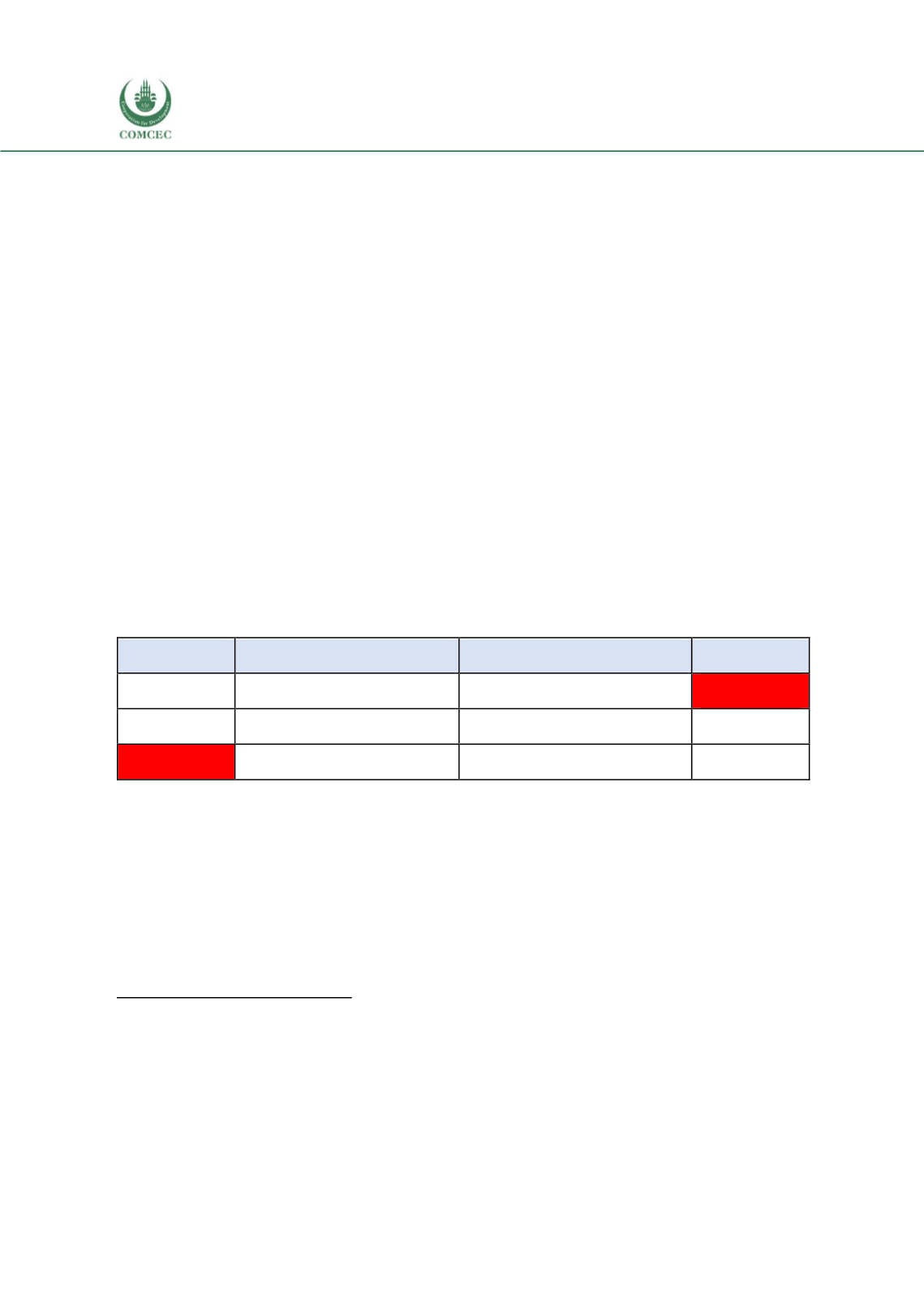

Increasing the Resilience of the Food Systems
In Islamic States in Face of Future Food Crises
116
Identifying food security vulnerabilities in Oman
Oman is vulnerable to climatic changes that are expected to exacerbate desertification and
endanger water security and agriculture
462
. Oman is expected to face water deficits by 2050 as
by then, it is estimated
tohave less than 500 cubicmeters per capita of freshwater annually. The
arable land is only 7%
463
of the total area of Oman. Frequency and intensity of natural disasters
is expected to rise in years to come.
The key economic driver of food insecurity in Oman is its dependence on hydrocarbon export
revenues. Hydrocarbons accounted for 47.2% of GDP in 2014, down from 50.6% in 2013
464
. In
case of protracted slumps in oil prices, Oman’s ability to spend on food supplieswill be strained.
Furthermore, even if Oman has the purchasing power toovercome increasing food bills, it might
be affected by export restrictions in case of future global crisis. Food price surges also impair
food access as certain households lack sufficient income to fulfill food needs.
Political drivers mainly, the instability of the Middle Eastern food exporter countries such as
Syria and Egypt, pose concerns to the status of food security in Oman. 81% of grains imported
to Gulf Countries pass through the Suez Canal, elevating the risk of cutting the supply chain in
case of any geopolitical conflict in the region
465
. In 2015, Russia, Germany, Australia, and Canada
were the principal suppliers of wheat to Oman. More than half of these imports passed through
the Suez Canal and the Strait of Bab Al Mandab
466
.
Table 59: Summary of areas of vulnerability in the Omani food system (highlighted in the
table)
Availability
Access and affordability
Utilization
Stability
Production
Transportation
Food safety
Availability
Reserves
Market Infrastructure
Care & Feeding Practices
Access
Imports
Purchasing Capacity
Health & Sanitation
Utilization
Source: DinarStandard Analysis
Food security Stakeholders
There aremultiple governmental and non-governmental stakeholders takingmeasures to
improve agricultural production and food security in Oman.
Government Entities and Responsibilities
The Ministry of Agriculture and Fisheries is the primary governmental body responsible for
policy setting, laws, research and investments for the development of the agriculture and the
462
WHOwebsite.
https://www.who.int/globalchange/resources/PHE-country-profile-Oman.pdf?Ua=1463
“Growing green strategic investments to boostself-sufficiency and exports”. Oxford Business Group, 2018.
https://oxfordbusinessgroup.com/overview/growing-green-strategic-investments-promising-sector-boost-self-sufficiency-and-exports
464
“Renewed efforts by Oman to further diversify the economy given shrinking oil revenues”. Oxford Business Group, 2018.
https
https://oxfordbusinessgroup.com/overview/renewed-efforts-oil-revenues-shrink-government-seeking-further-diversify-economy-boost-employment
465
Oxford Business Group. THE REPORT Oman 2016.
466
“Food Security in the GCC”. Rand Corporation, 2018.
https://emerge85.io/wp-content/uploads/2017/10/Food-Security-in-the-Gulf-Cooperation-Council.pdf
















